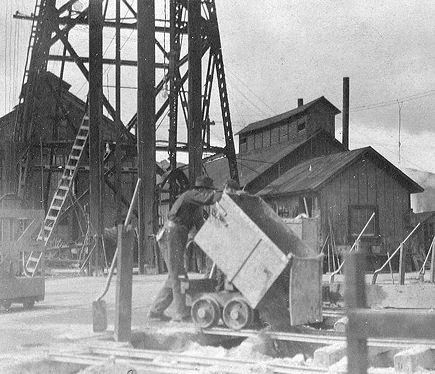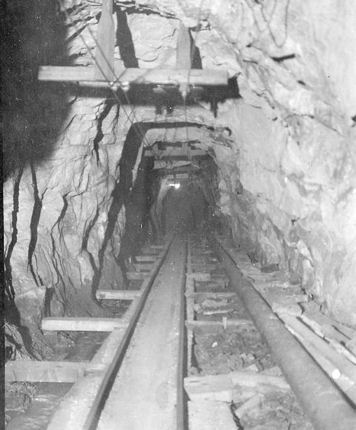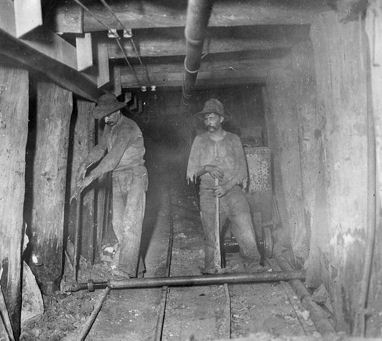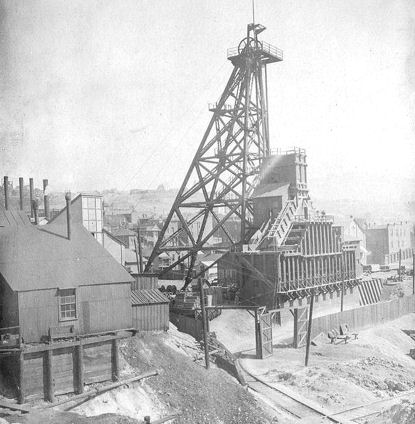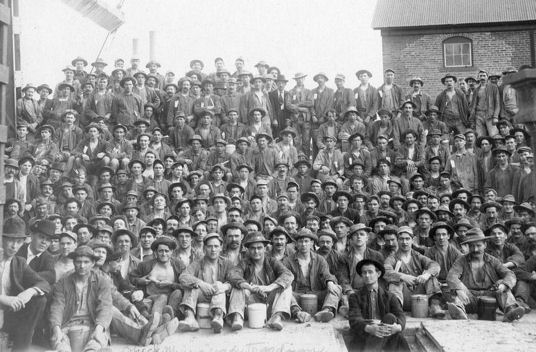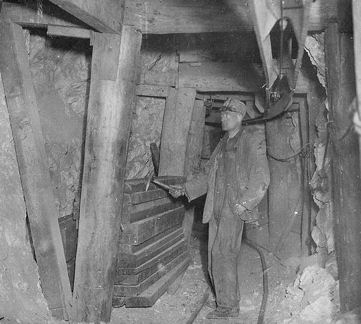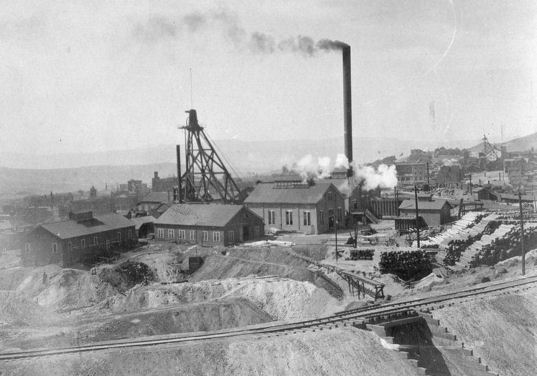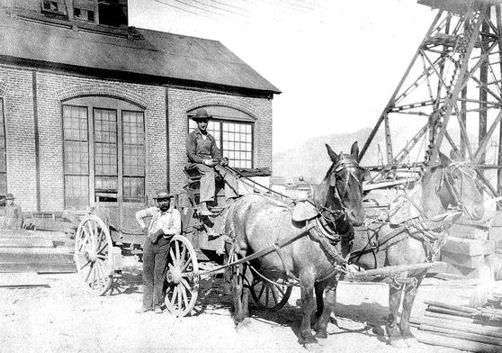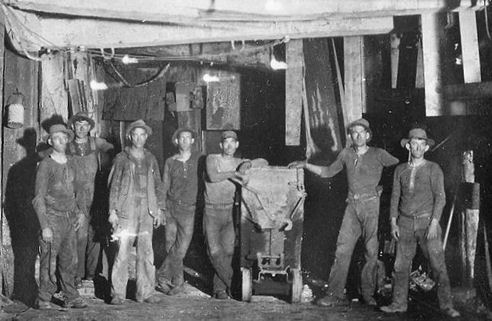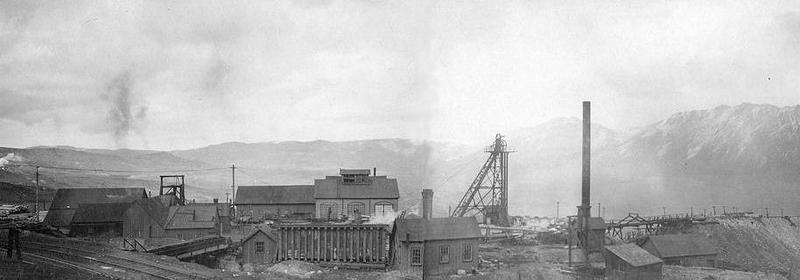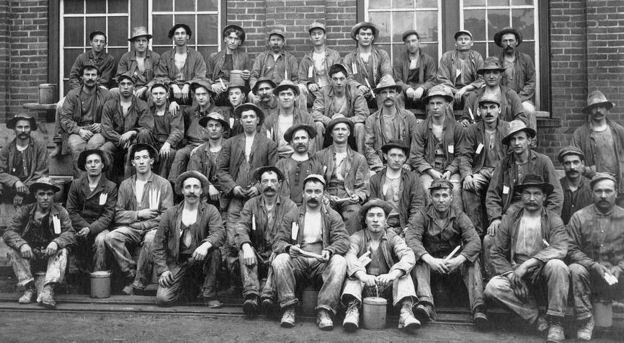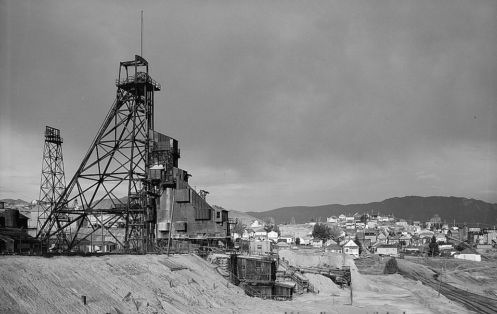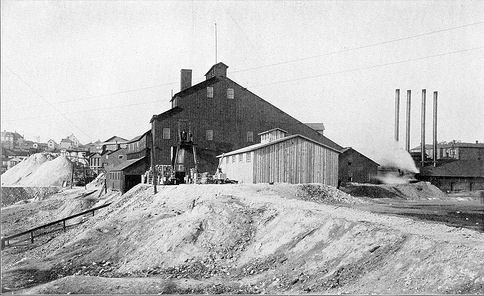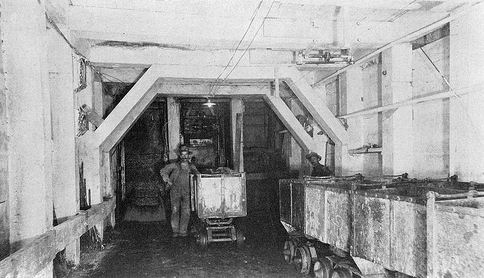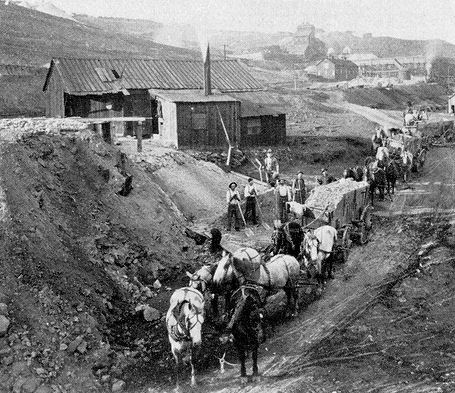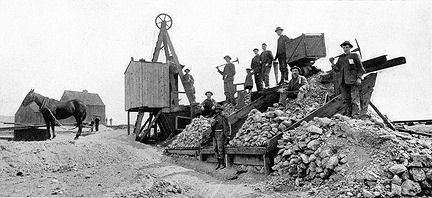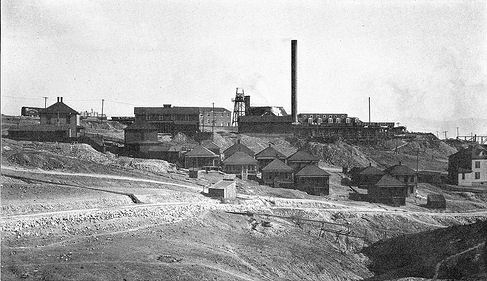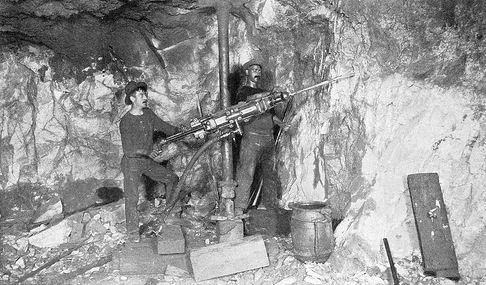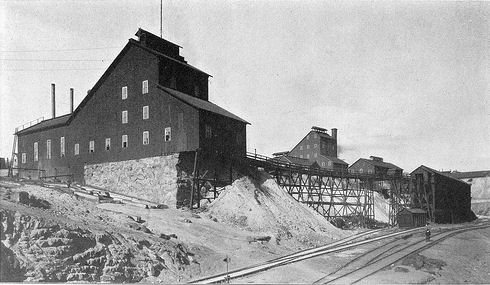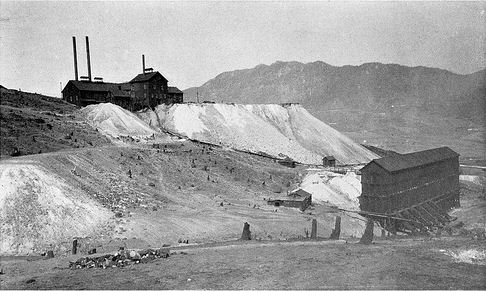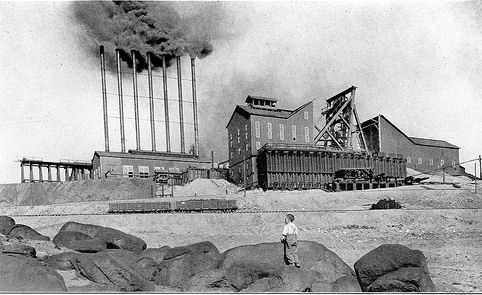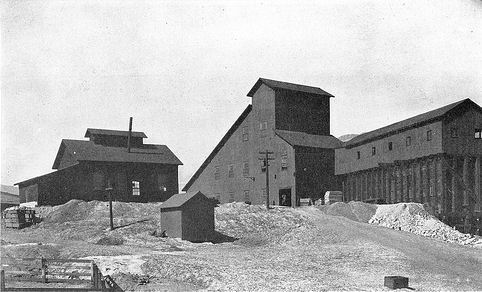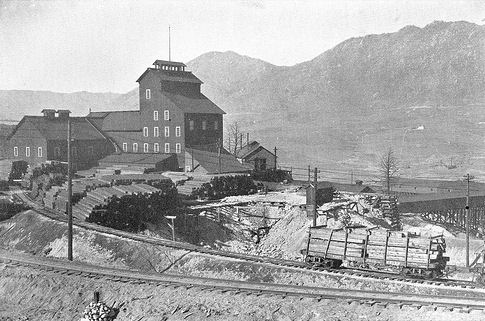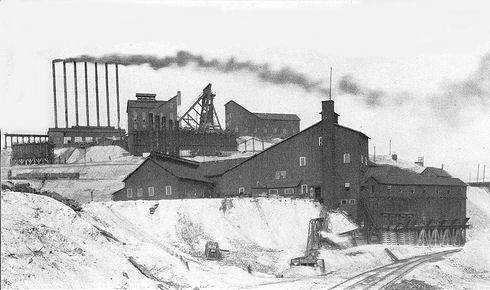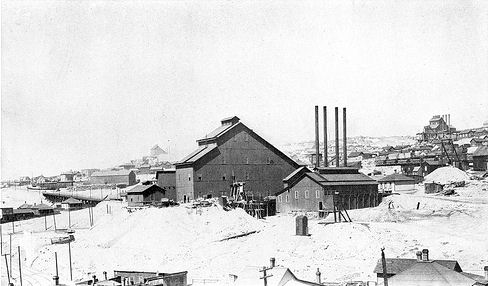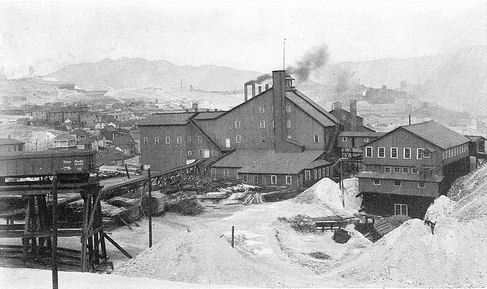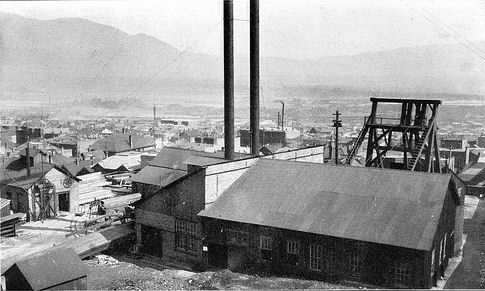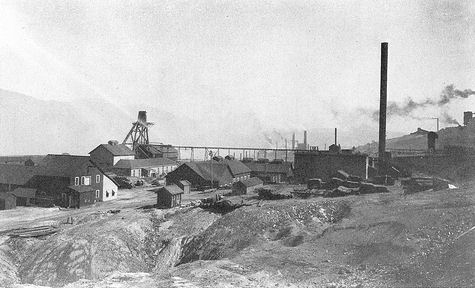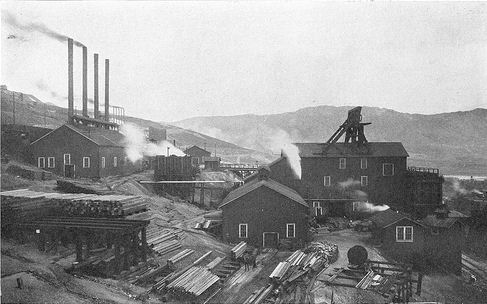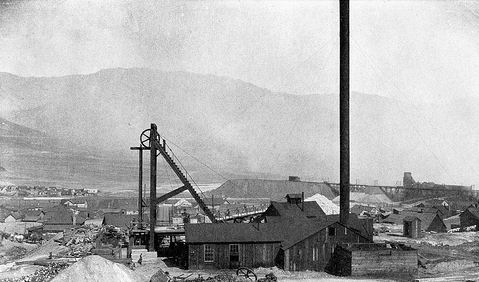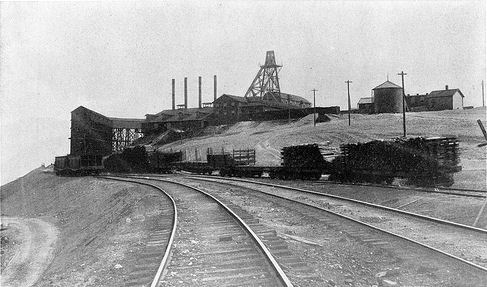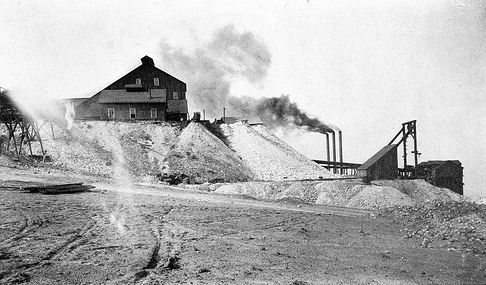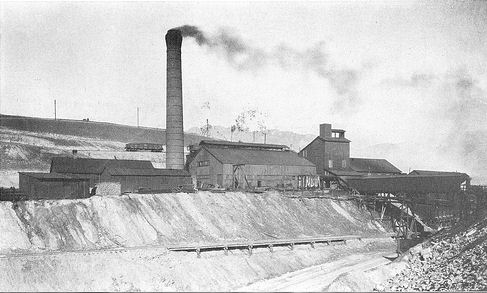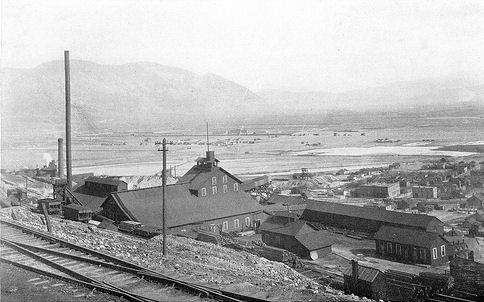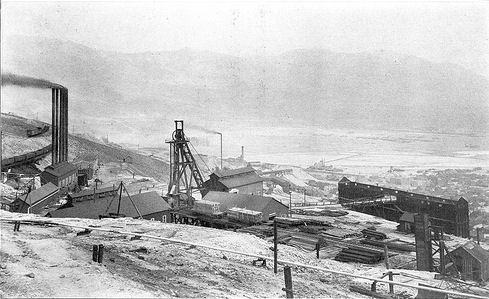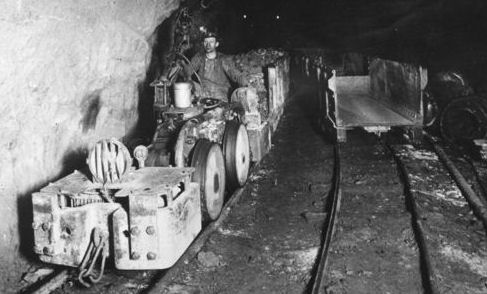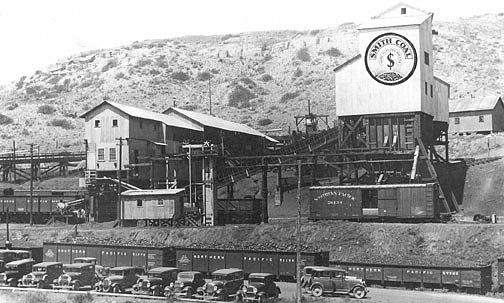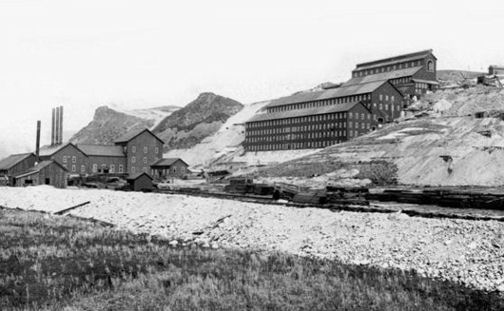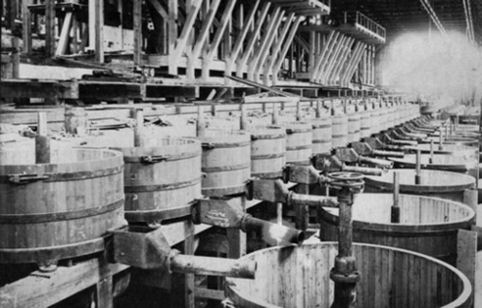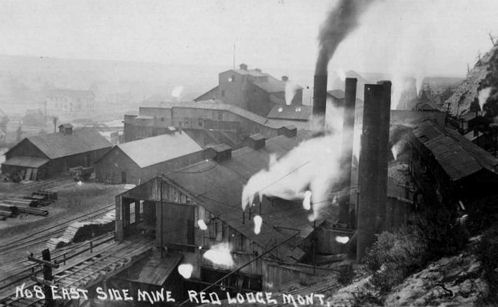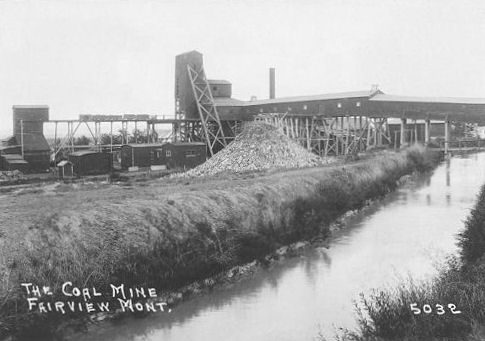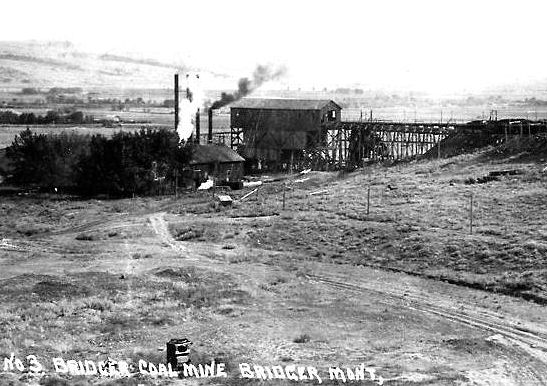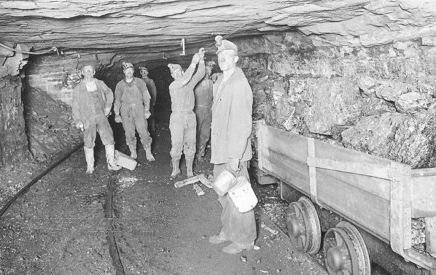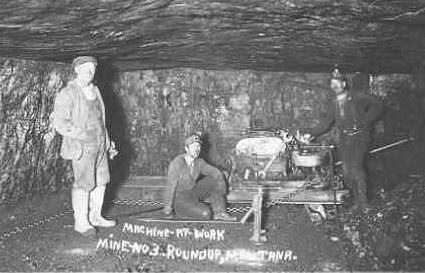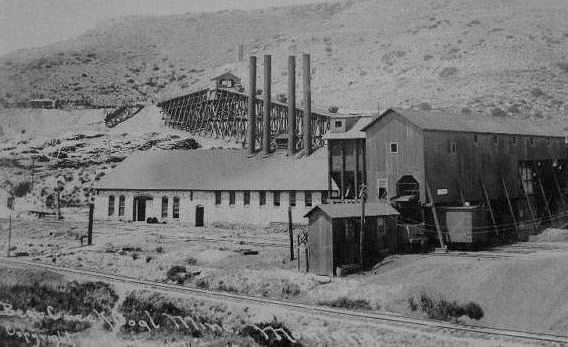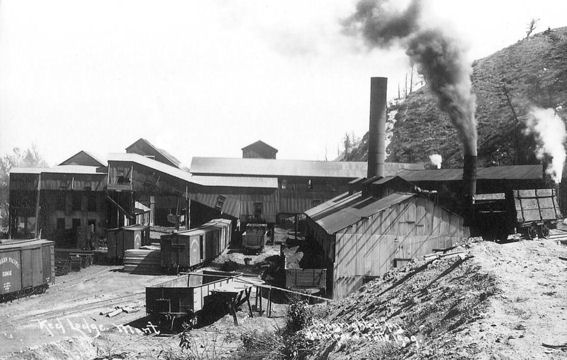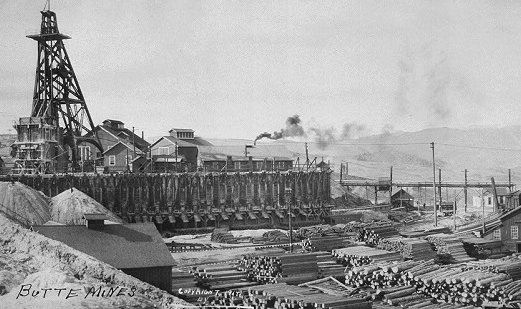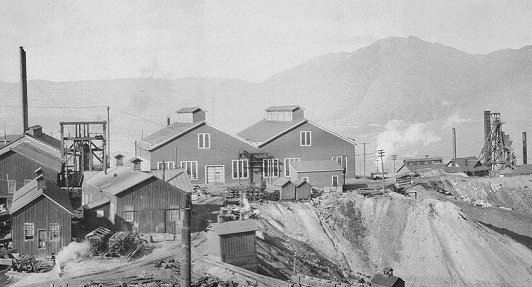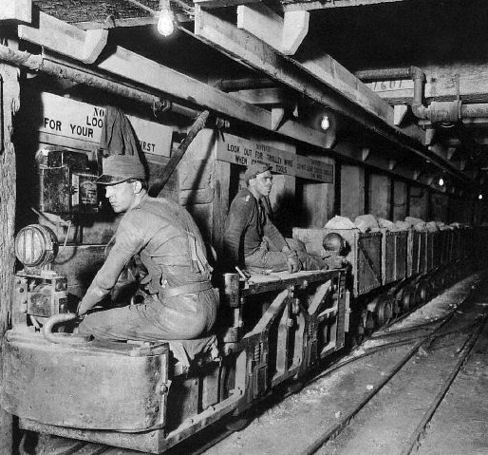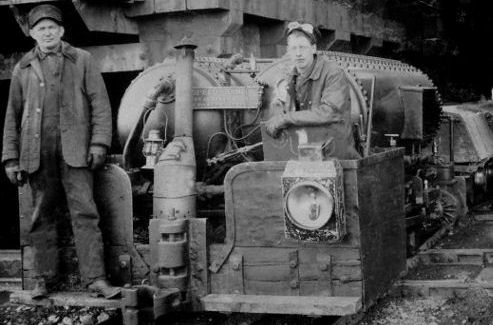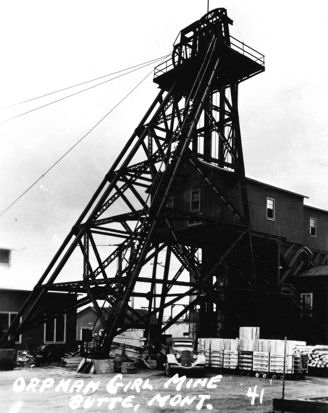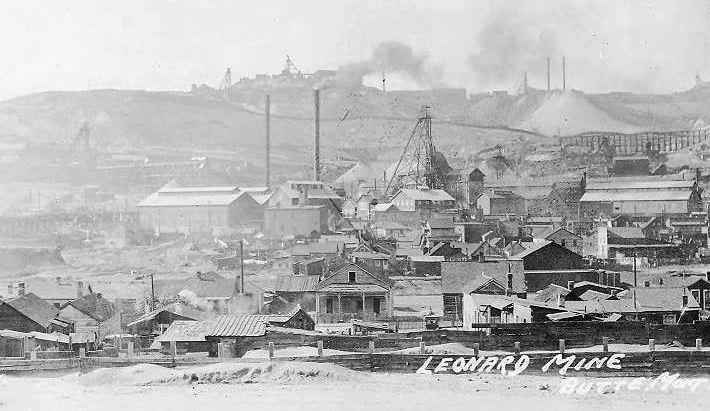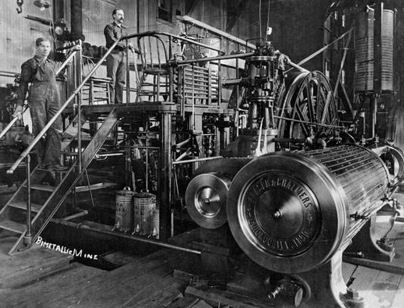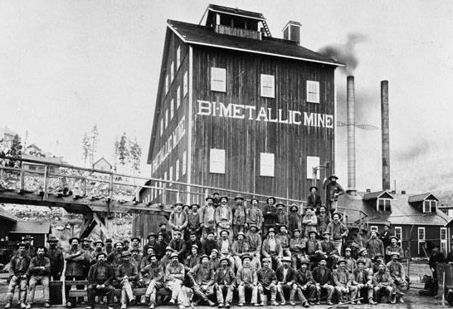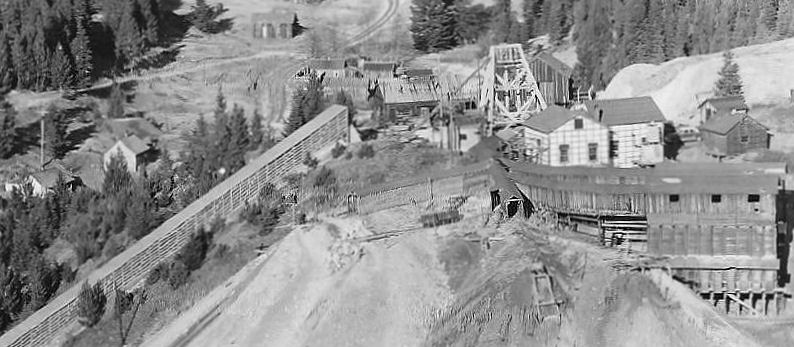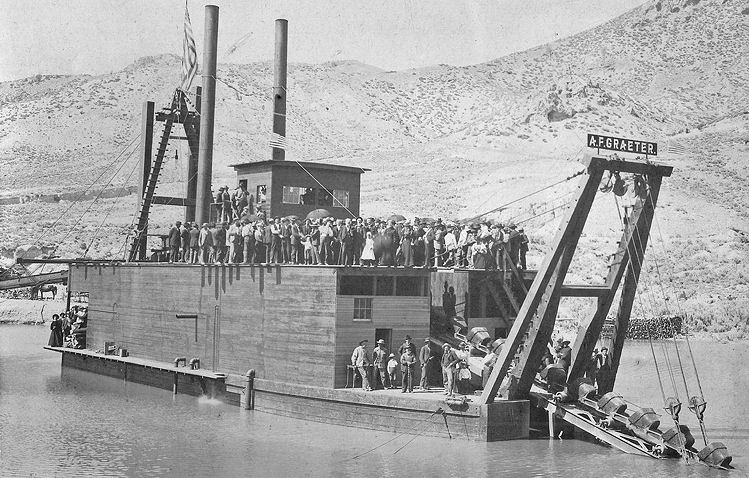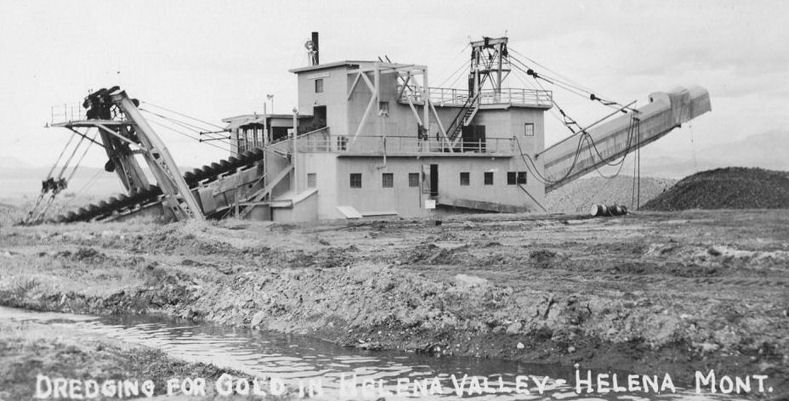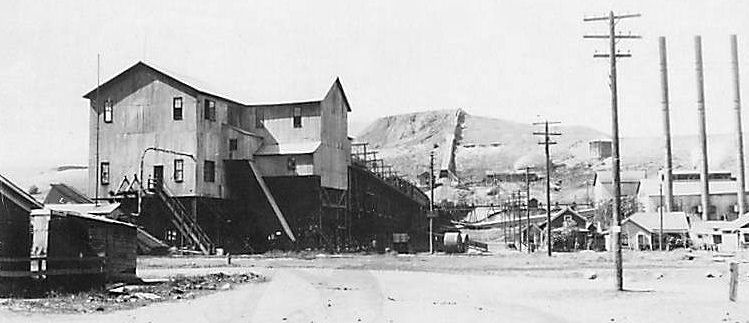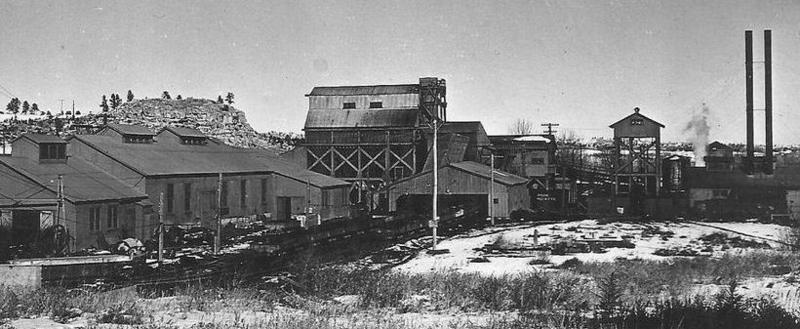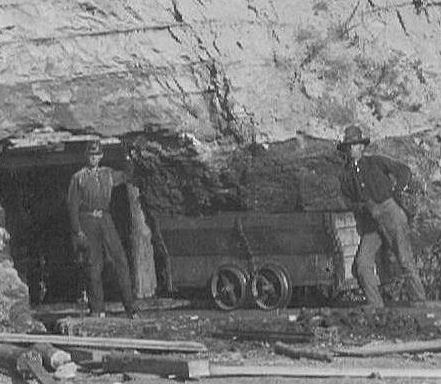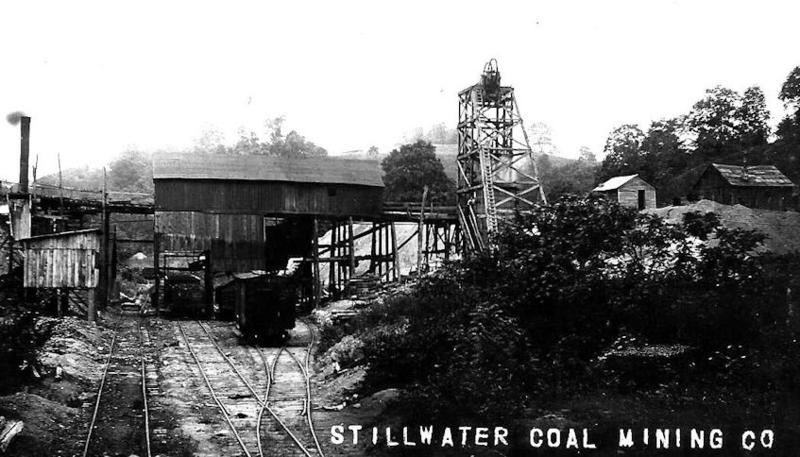MONTANA MINES
Montana has a history of gold, silver, copper lead, zinc manganese and coal mining. Mining in Montana began in 1864, when the glint of gold in a prospector’s pan attracted hundreds to the banks of Silver Bow Creek.Mining first centered around Bannack and Virginia City and the miners quickly spread out around the territory seeking new gold fields. The early claims were predominantly placer mines, but by 1870 there were a significant number of underground quartz mines. These mines required a large investment in stamp mills, reduction works, and smelters to treat the ore. Different mining districts produced different metals depending on the geology of the area. For example, Bannack, Virginia City, and Marysville were predominantly gold; Philipsburg was predominantly silver and manganese; and Butte was predominantly copper.
While the first metal mining was for gold and silver, the real mineral wealth of Montana was found it its copper mines around Butte. Butte began as a mining town in the 19th century in the Silver Bow Creek Valley, a natural bowl sitting high in the Rockies straddling the Continental Divide. Originally only gold and silver were mined in the area, but the advent of electricity caused a soaring demand for copper, which was abundant in the area. The small town soon became one of the most prosperous cities in the country, especially during World War I, and was known as "the Richest Hill on Earth". Between 1880 and teh early 1990s, Butte produced staggering mineral wealth, including nearly 3 million ounces of gold, 709 million ounces of silver, 855 million pounds of lead, 3.7 billion pounds of manganese, 4.9 billion pounds of zinc, and an incredible 20.8 billion pounds of copper.
Three men fought for control of Butte's mining wealth. These three "Copper Kings" were William A. Clark, Marcus Daly, and F. Augustus Heinze. In 1899, Daly joined with William Rockefeller, Henry H. Rogers, and Thomas W. Lawson to organize the Amalgamated Copper Mining Company. Not long after, the company changed its name to Anaconda Copper Mining Company (ACM). Over the years, Anaconda has been owned by assorted larger corporations. In the 1920s, it had a virtual monopoly over the mines in and around Butte.
Speculator Mine - Butte, MT
Speculator Mine - Butte, MT
Speculator Mine - Butte, MT
Speculator Mine - Butte, MT
Speculator Mine - Butte, MT
Speculator Mine - Butte, MT
Speculator Mine - Butte, MT
Speculator Mine - Butte, MT
Speculator Mine - Butte, MT
Speculator Mine - Butte, MT
Speculator Mine - Butte, MT
Speculator Mine - Butte, MT
Speculator Mine - Butte, MT
Speculator Mine - Butte, MT
Speculator Mine - Butte, MT
Anselmo Mine - Butte, MT
Original Mine - Butte, MT
1100' Level - Original Mine - Butte, MT
Ore Wagons -Butte, MT
Horse Whim - Butte, MT
Anaconda Mine - Butte, MT
1700' Level - Anaconda Mine - Butte, MT
Green Mountain Mine - Butte, MT
Mountain Consolidated Mine No.2 - Butte, MT
Modoc Mine - Butte, MT
Neversweat Mine - Butte, MT
High Ore Mine - Butte, MT
E. Colusa Mine - Butte, MT
W. Colusa Mine - Butte, MT
Colusa Parrot Mine - Butte, MT
Stewart Mine - Butte, MT
Gagnon Mine - Butte, MT
Blue Jay Mine - Butte, MT
Leonard Mine - Butte, MT
Moonlight Mine - Butte, MT
Minnie Healey Mine - Butte, MT
Mountain View Mine - Butte, MT
Rarus Mine - Butte, MT
Silver Bow Mine No.1 - Butte, MT
Pennsylvania Mine - Butte, MT
St. Lawrence Mine - Butte, MT
Underground Tram - Butte, MT
Smith Mine No. 3, Montana Coal & Iron Co. - Bearcreek, MT
Anaconda Reduction Works - Anaconda, MT
Anaconda Reduction Works - Anaconda, MT
On September 17, 1851, the United States government signed a treaty with the Crow Nation, ceding the area which now contains Red Lodge to the Crow Indians. Rich coal deposits were found there in 1866, and gold was discovered nearby in 1870. An 1880 treaty between the U.S. government and the Crow allowed the area to be settled starting April 11, 1882.
The settlement of Red Lodge took off when the Rocky Fork Coal Company opened the area’s first mine in 1887, hundreds of immigrants,Finns, Scots, Irish, Italians and Slavs, arrived and mined coal. During this boom time, Red Lodge was a lively place, with 20 saloons and a burgeoning population.
The advent of strip mining in southeastern Montana in the 1920s signaled the beginning of the end of the Red Lodge coal boom. In 1924, the West Side Mine closed. The Great Depression forced more mines to close, and in 1943 an underground explosion killed 74 men at the Smith Mine in Bearcreek four miles east of Red Lodge, devastating the community and effectively ending coal mining in Carbon County.
Bearcreek owes its existence to area coal mining that began in the 1890s to supply coal for the Northern Pacific Railroad and the Anaconda Company. The town was platted and incorporated after the arrival of the Montana, Wyoming & Southern Railroad in 1906, and it grew rapidly as American and foreign-born workers moved there, drawn by the promise of steady work. By 1917, the mines around Bearcreek were employing 1,200 men.
On February 27, 1943, at approximately 9:37 a.m., an explosion ripped through Smith Mine No.3, a coal mine located between the towns of Bearcreek and Washoe. Since it was a Saturday, there was a short crew in the mine. Of the 77 men working that day, only 3 got out of the mine alive, and one of the rescue workers died soon afterwards. The report from the United States Bureau of Mines states that 30 of the men were killed instantly by the explosion, and the remainder died either through injuries sustained in the explosion, or through suffocation from the carbon monoxide and methane gas in the mine. The Smith Mine disaster was the worst coal mining disaster in the State of Montana, and the 43rd worst in the United States.
The Roundup Coal Company opened its first mine, Republic Mine No.1, in 1907 This mine was closed in 1912 because the coal seam ran about 200 feet under the Musselshell River and the mine flooded. In 1909, a second mine, the No.2 was opened, which was known locally as the Klein Mine.
Coal Miners - Roundup, MT
Mine No. 3 - Roundup, MT
Bearcreek Coal Mine - Bearcreek, MT
Coal Mine - Red Lodge, MT
Anaconda Copper Mine - Butte
Anaconda Copper Mine - Butte
Bi-Metallic Mine - Granite, MT
Bi-Metallic Mine - Granite, MT
True Fissure Mine - Bryant District (Hecla District), Beaverhead County, MT
A.F. Graeter Gold Dredge - Bannock, MT
Montana Coal Miners
Westside Mine - Red Lodge, MT
No. 3 Coal Mine - Roundup, MT
Stillwater Coal Mining Co. - Columbus, MT
Unidentified Coal Mine - Roundup, MT

